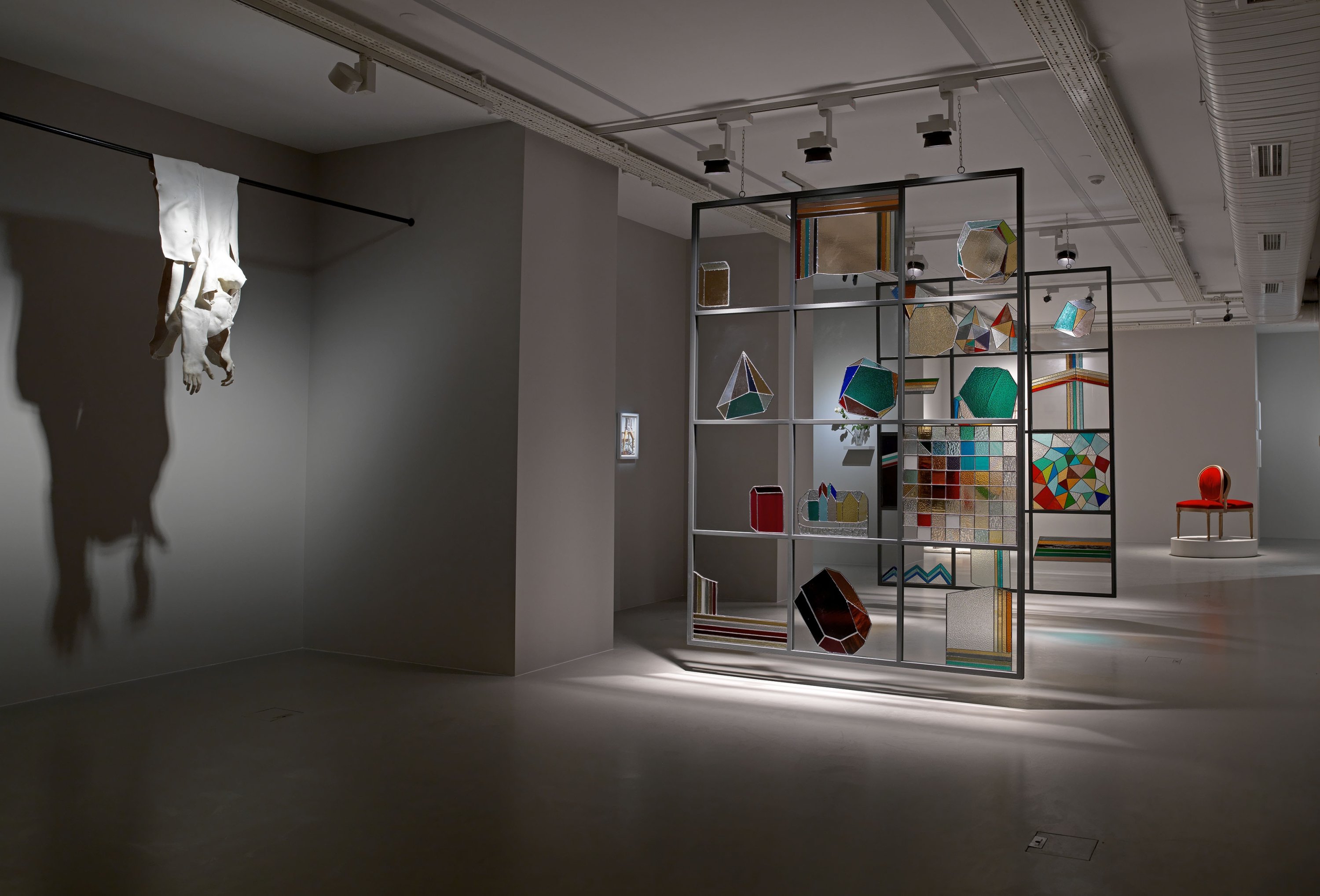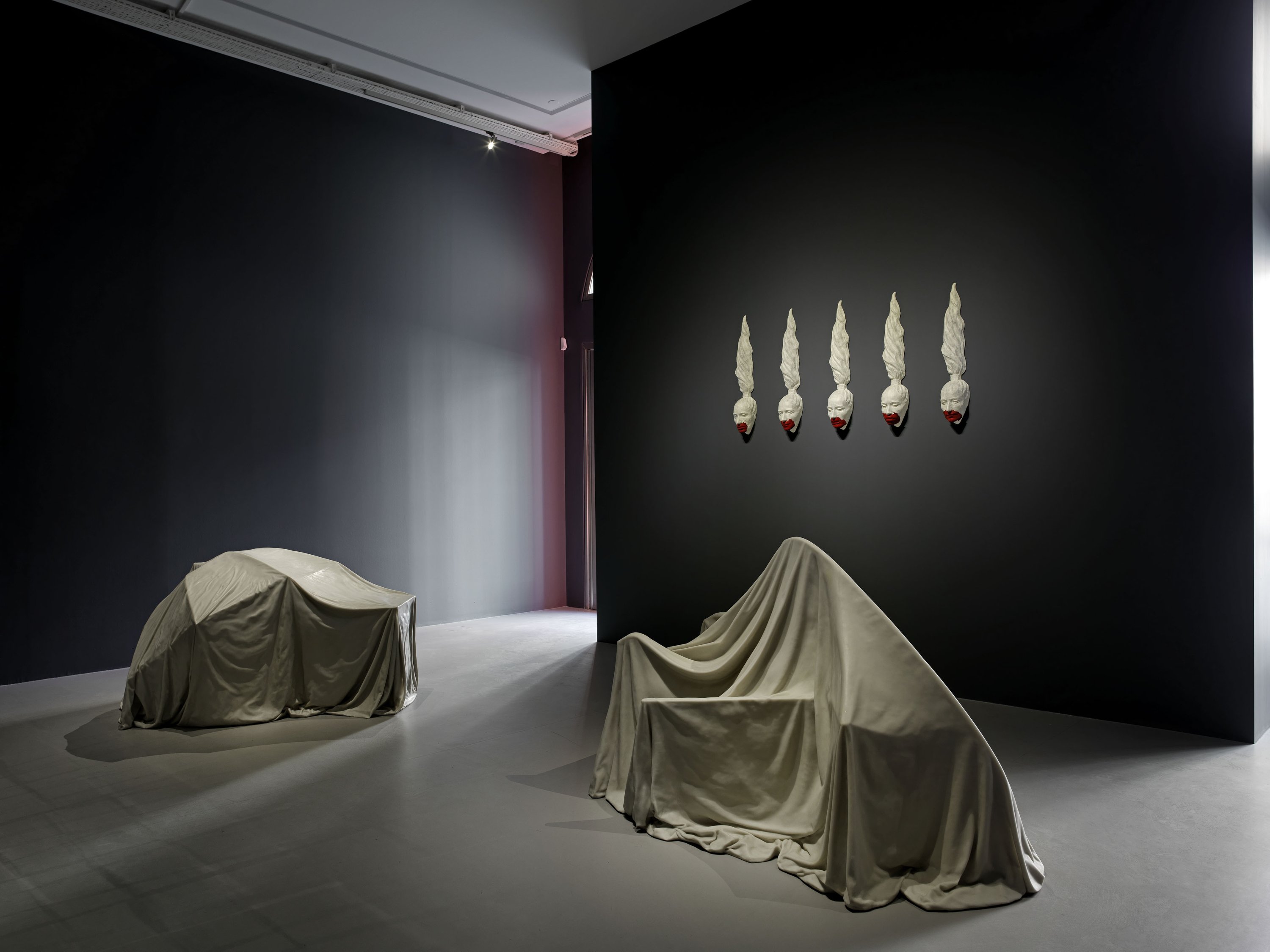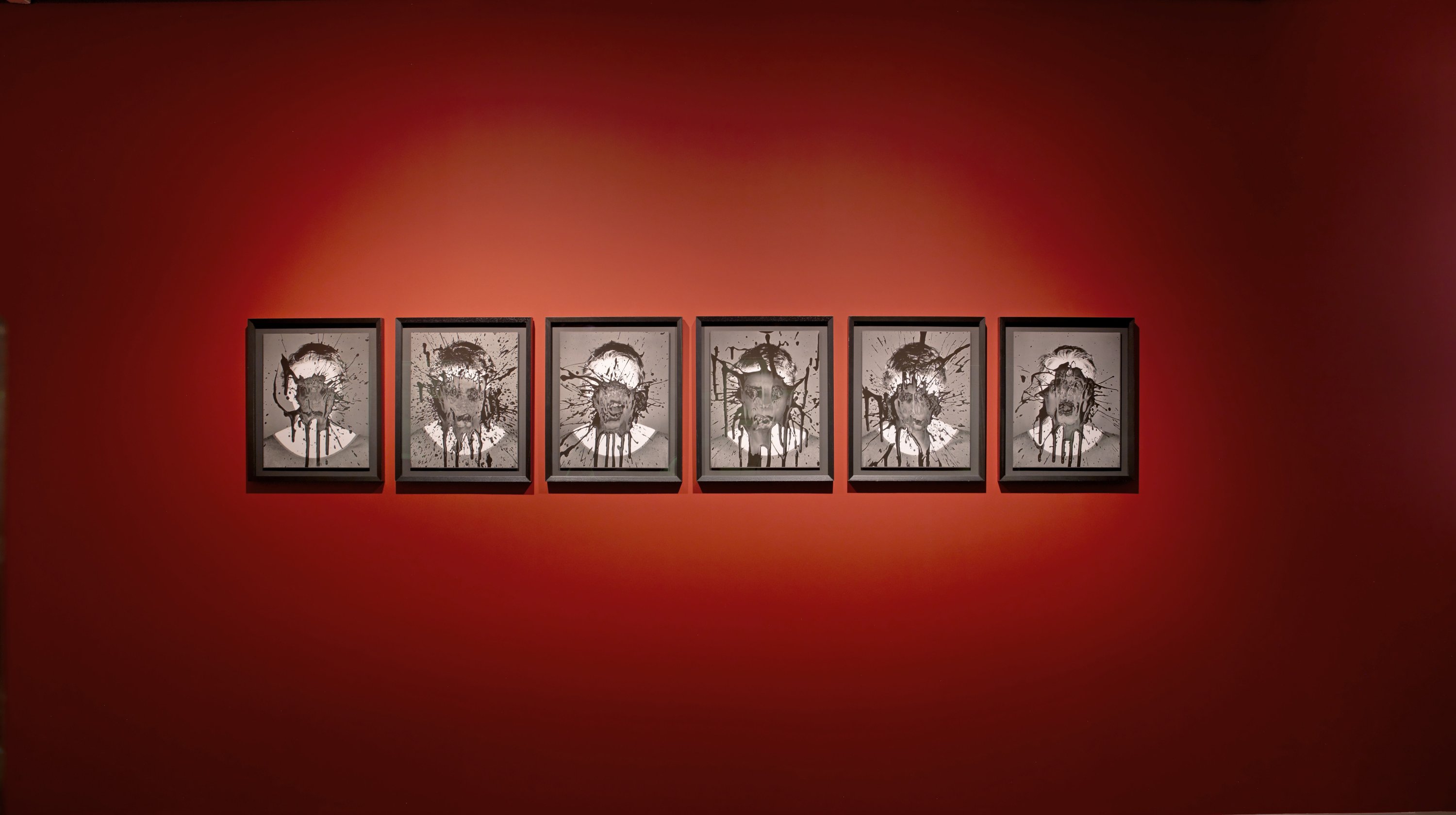© Turkuvaz Haberleşme ve Yayıncılık 2026
One of Türkiye's most crowded streets, Istanbul's Istiklal overflows with extraordinary exhibitions these days.
The exhibition "I am Nobody. Are You Nobody Too?" based on the story of Echo's unrequited love for Narcissus from Greek mythology is one of the many art stops along the way. Taking place at the spacious Meşher gallery and featuring nearly 120 works by 44 artists from Türkiye and abroad, the exhibition has opened as part of the Beyoğlu Culture Road project.
Curated by Selen Ansen, the works that come together in the exhibition interpret the themes of reflection, resonance and metamorphosis presented through an ancient narrative in the light of today's artistic and social dynamics. Visitors can view the exhibition until Feb. 12, 2023.
Speaking at the opening of the exhibition, Ansen emphasized that the show is rooted in the concept of metamorphosis, which is at the center of the Echo and Narcissus myth. Rather than depicting the myth, the exhibition is built upon the remains of this story.

The name of the exhibition is a nod to the short poem "I'm Nobody! Who are you?" by American poet Emily Dickinson. In the poem she celebrates being at the periphery of society, praising anonymity and ordinariness rather than her uniqueness, writing in the first stanza:
"I’m Nobody! Who are you?
Are you – Nobody – too?
Then there’s a pair of us!
Don't tell! they'd advertise – you know!"
Within this theme, the exhibition also invites visitors to a space where relationships are woven between countless you(s), me(s), desires, narratives, images and experiences. The exhibition adopts the cyclical and repetitive structure of the myth and mythological narrative, focusing on what the story has left behind, emphasizing the necessary distances for distant, past or unknown things to reach out to us and impact our lives.

The works displayed at Mehşer where the visual, audible and tangible intersect offer the opportunity to experience various forms of relationships between skin and voice, voice and shape, self and other, human and non-human, material and non-material things. While connecting with issues related to reflection and illusion in the contemporary world, it offers an artistic overview of the concepts such as the face, mirror, shadow, existence/disappearance, identity, representation and more throughout history.
There are many versions of the myth of Echo and Narcissus. Yet, the exhibition is inspired by Ovid's epic poem "Metamorphoses," written in the first century.
According to Ovid, the myth revolves around the unrequited love of Echo, a forest nymph, and the legendary Narcissus. Accused of being too talkative, Echo is punished by the gods who put a curse on her so she can no longer speak her mind and only repeat the last words others say.

One day, she falls for Narcissus when she sees him from afar but cannot call out to him and express how she feels. She follows him while he is hunting and when he becomes separated from his group and calls out "is anybody out there?" she responds by repeating his words, startling Narcissus. Believing that the owner of the voice must be running away from him, Narcissus shouts "this way, we must come together," which Echo takes as a reciprocation of her love. However, the young man does not feel the same way and rejects her, causing Echo to wither away with grief. As her bones turned to stone, all that remained was the sound of her voice, an echo.
The fate of Narcissus is similar to that of Echo. One day, he is struck by his own reflection, which he sees on the surface of a lake. When he realizes that the image he has fallen in love with is his own reflection in a pool of water, he stares at it for the remainder of his life. After he dies, in his place a flower bearing his name sprouts every year before spring.
"I Am Nobody. Are You Nobody Too?" also aims to continue the dialogue presented in the exhibition and create new ones through the publication of a book. This publication, which moves away from the usual exhibition catalog format, not only sheds light on the historical background of the exhibition but also examines the themes of reflection, resonance, self and more by creating bridges between the past and the present. Texts translated into Turkish for the first time are among the resources included in the publication compiled by exhibition curator Selen Ansen and Meşher curators Ebru Esra Seller and Şeyda Çetin.
